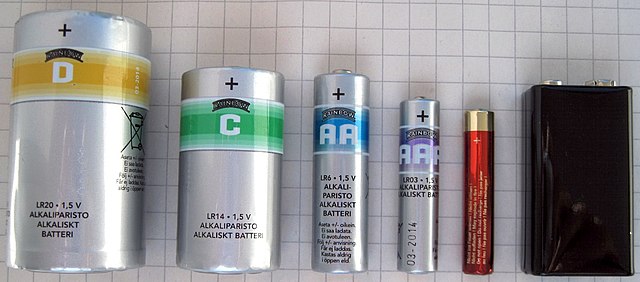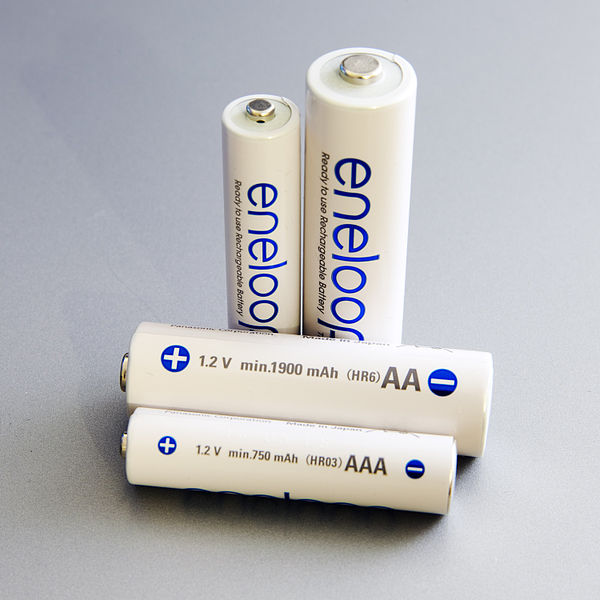The AAA battery is a standard size of dry cell battery. One or more AAA batteries are commonly used in low-drain portable electronic devices. A zinc–carbon battery in this size is designated by IEC as R03, by ANSI C18.1 as 24, by old JIS standard as UM-4, and by other manufacturer and national standard designations that vary depending on the cell chemistry. The size was first introduced by The American Ever Ready Company in 1911. They're called #7 batteries in China, the name originating from the Burgess Battery Company designating his AAA batteries "Number 7".
AAA batteries showing both alkaline (LR03) and zinc (R03) versions
D, C, AA, AAA, AAAA, 9-Volt batteries
Panasonic Eneloop 1.2 V NiMH rechargeable batteries in AA and AAA
An electric battery is a source of electric power consisting of one or more electrochemical cells with external connections for powering electrical devices. When a battery is supplying power, its positive terminal is the cathode and its negative terminal is the anode. The terminal marked negative is the source of electrons that will flow through an external electric circuit to the positive terminal. When a battery is connected to an external electric load, a redox reaction converts high-energy reactants to lower-energy products, and the free-energy difference is delivered to the external circuit as electrical energy. Historically the term "battery" specifically referred to a device composed of multiple cells; however, the usage has evolved to include devices composed of a single cell.
Various cells and batteries (top left to bottom right): two AA, one D, one handheld ham radio battery, two 9-volt (PP3), two AAA, one C, one camcorder battery, one cordless phone battery
A voltaic pile, the first battery
Italian physicist Alessandro Volta demonstrating his pile to French emperor Napoleon Bonaparte
From top to bottom: a large 4.5-volt 3R12 battery, a D Cell, a C cell, an AA cell, an AAA cell, an AAAA cell, an A23 battery, a 9-volt PP3 battery, and a pair of button cells (CR2032 and LR44)







